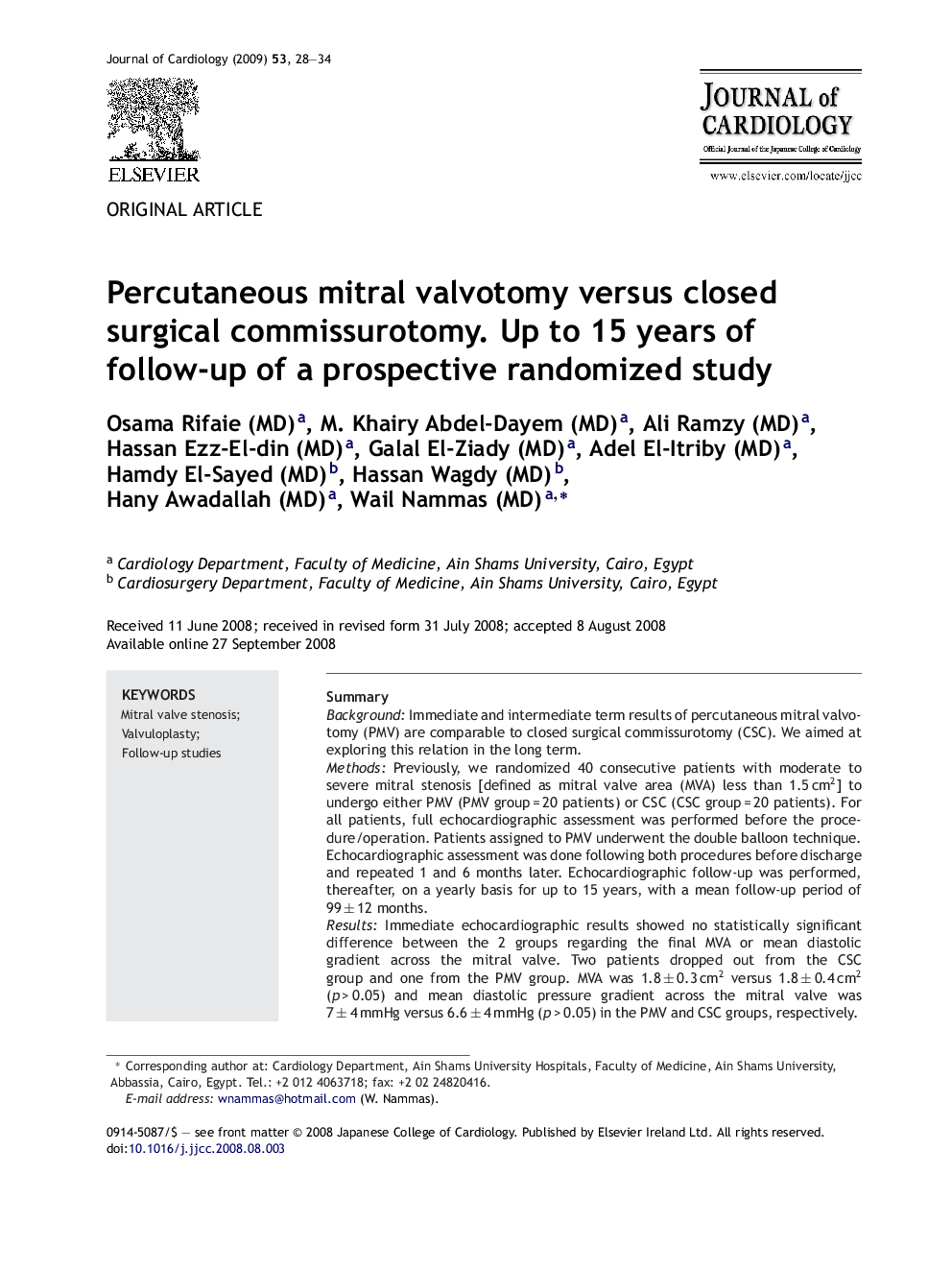| Article ID | Journal | Published Year | Pages | File Type |
|---|---|---|---|---|
| 2963779 | Journal of Cardiology | 2009 | 7 Pages |
SummaryBackgroundImmediate and intermediate term results of percutaneous mitral valvotomy (PMV) are comparable to closed surgical commissurotomy (CSC). We aimed at exploring this relation in the long term.MethodsPreviously, we randomized 40 consecutive patients with moderate to severe mitral stenosis [defined as mitral valve area (MVA) less than 1.5 cm2] to undergo either PMV (PMV group = 20 patients) or CSC (CSC group = 20 patients). For all patients, full echocardiographic assessment was performed before the procedure/operation. Patients assigned to PMV underwent the double balloon technique. Echocardiographic assessment was done following both procedures before discharge and repeated 1 and 6 months later. Echocardiographic follow-up was performed, thereafter, on a yearly basis for up to 15 years, with a mean follow-up period of 99 ± 12 months.ResultsImmediate echocardiographic results showed no statistically significant difference between the 2 groups regarding the final MVA or mean diastolic gradient across the mitral valve. Two patients dropped out from the CSC group and one from the PMV group. MVA was 1.8 ± 0.3 cm2 versus 1.8 ± 0.4 cm2 (p > 0.05) and mean diastolic pressure gradient across the mitral valve was 7 ± 4 mmHg versus 6.6 ± 4 mmHg (p > 0.05) in the PMV and CSC groups, respectively. Mitral restenosis occurred in 5 (26.3%) patients in the PMV group versus 5 (27.8%) patients in the CSC group (p > 0.05). Kaplan–Meier curves for restenosis-free survival showed no difference between the 2 groups.ConclusionPMV achieves comparable results to CSC both in the short and long term.
